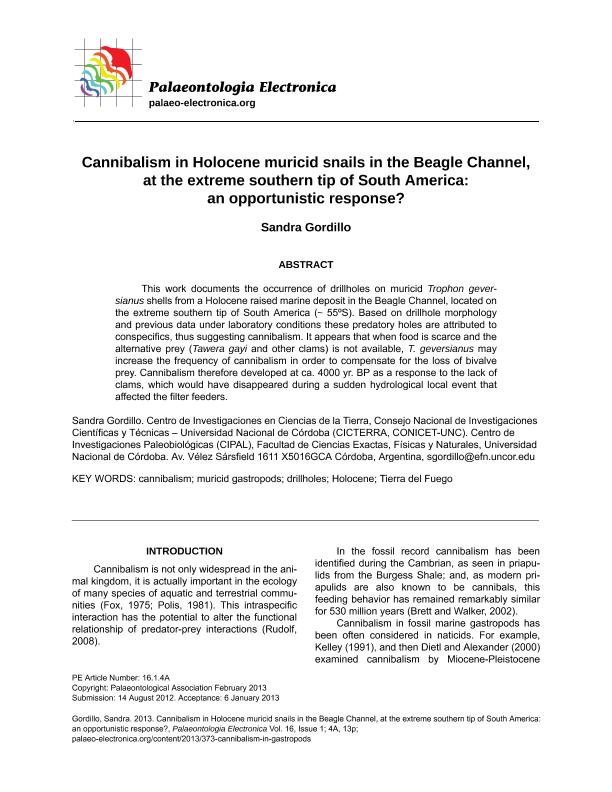Artículo
Cannibalism in Holocene muricid snails in the Beagle Channel, at the extreme southern tip of South America: an opportunistic response?
Fecha de publicación:
01/2013
Editorial:
Coquina Press
Revista:
Palaeontologia Electronica
ISSN:
1094-8074
e-ISSN:
1532-3056
Idioma:
Inglés
Tipo de recurso:
Artículo publicado
Clasificación temática:
Resumen
This work documents the occurrence of drillholes on muricid Trophon geversianus shells from a Holocene raised marine deposit in the Beagle Channel, located on the extreme southern tip of South America (~ 55ºS). Based on drillhole morphology and previous data under laboratory conditions these predatory holes are attributed to conspecifics, thus suggesting cannibalism. It appears that when food is scarce and the alternative prey (Tawera gayi and other clams) is not available, T. geversianus may increase the frequency of cannibalism in order to compensate for the loss of bivalve prey. Cannibalism therefore developed at ca. 4000 yr. BP as a response to the lack of clams, which would have disappeared during a sudden hydrological local event that affected the filter feeders.
Palabras clave:
Gastropoda
,
Drilling Predation
,
Holocene
,
Tierra del Fuego
,
Cannibalism
Archivos asociados
Licencia
Identificadores
Colecciones
Articulos(CICTERRA)
Articulos de CENTRO DE INVEST.EN CS.DE LA TIERRA
Articulos de CENTRO DE INVEST.EN CS.DE LA TIERRA
Citación
Gordillo, Sandra; Cannibalism in Holocene muricid snails in the Beagle Channel, at the extreme southern tip of South America: an opportunistic response?; Coquina Press; Palaeontologia Electronica; 16; 1; 1-2013; 1-13
Compartir




